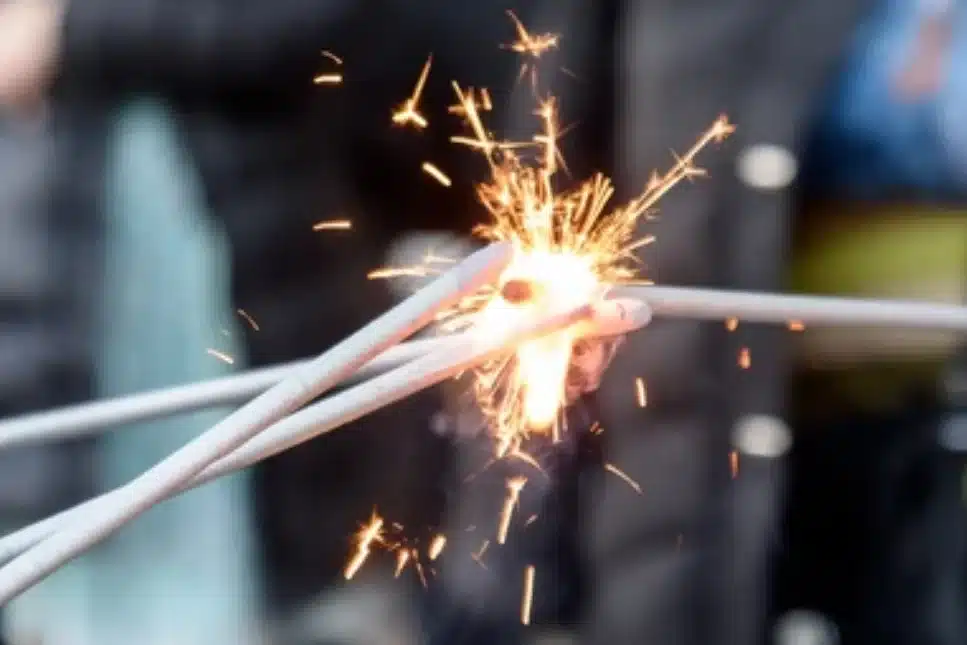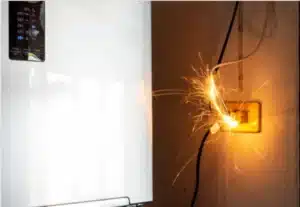Electrical short circuits are one of the most common yet dangerous issues in homes and workplaces. They occur when the electrical flow takes an unintended path, leading to potential damage or even fire hazards. If not handled promptly, it could lead to severe risks. I’ve personally seen how minor faulty appliances can escalate into major repairs, so addressing such concerns early is essential.
In this blog, we’ll explore the causes of electrical short circuits, how to identify them, and effective ways to prevent these incidents, ensuring the safety of your property and loved ones
What is Electrical Short Circuit
When an electrical current takes the path of least resistance, it can cause a short circuit. This happens when conductors come into contact, allowing a surge of electricity to bypass the intended circuit. The result can be damage to equipment, fires, or even electrocution.
I’ve seen this occur in homes where faulty wiring or damaged insulation exposed conductive materials, creating unsafe paths for electricity. Environmental factors like moisture or dust can worsen the problem by causing corrosion and forming conductive paths where they shouldn’t exist.
In my experience, a short circuit often leads to a rapid flow of electricity that increases exponentially, creating an overload on the circuit. This can trip a breaker, blow a fuse, or cut off the power supply. To prevent such hazards, I always advise inspecting and maintaining electrical systems regularly. Simple checks for loose connections, damaged cords, or faulty plugs can make a big difference.
Ensuring proper grounding and avoiding the improper use of high-power devices on the same circuit are essential. If a problem arises, seeking professional help to diagnose and fix the issue is crucial, as attempting repairs without proper knowledge or equipment can be extremely dangerous.
What Happens When a Short Circuit Occurs?
A short circuit happens when an unintended connection is made in an electrical circuit, allowing a sudden surge of electrical current to bypass the normal resistance and load. This can lead to an excessive flow of electricity, generating high current that produces heat, sparks, and sometimes even fires.
It poses a serious risk to the safety of a building and its occupants, especially in older wiring systems. Having personally witnessed the damage a short circuit can cause, I always stress the importance of using high-quality components and ensuring regular electrical inspections to prevent such dangerous connections.
Causes of a Short Circuit
Having personally dealt with electrical short circuits in my home, I can share that they’re not just technical glitches but potential safety hazards. Let’s explore the causes of a short circuit, step by step, in a practical and relatable way.
Overloading Electrical Short Circuit
Overloading an electrical circuit happens when too many electrical devices or appliances are plugged into a single circuit, exceeding its capacity. This results in excessive current flow, which leads to overheating and eventually a short circuit.
For example, during a recent holiday season, my family overloaded a power strip with decorations and heaters, unaware of the circuit’s ampere rating. The overheating risks became evident when the circuit tripped.
Pro tip: Avoid plugging too many appliances into one socket, and know your ampere limits.
Faulty Wiring and Age Factors
Faulty wiring is another silent but common culprit. Over time, wiring issues develop due to physical damage, pests, or age factors, resulting in damaged wiring. I once encountered a severe issue where frayed wires in an older house caused sparks near contact surfaces. The compromised insulation of the wires made them touch conductive surfaces, leading to dangerous short circuits.
Pro tip: Inspect protective insulation regularly to avoid risks from worn-out or damaged wiring.
Damaged Insulation: A Hidden Threat
The insulation around electrical wires serves as a safety barrier, preventing wires contact or exposure to conductive surfaces. However, factors like rodents, extreme temperatures, or even routine wear can cause damaged insulation. I learned this the hard way when a section of exposed wires in our attic created a serious risk due to insulation deterioration.
Pro tip: Address insulation damage promptly to reduce the chances of a short circuit caused by insulation issues.
The Role of Moisture and Water
Living in a humid climate, I’ve seen firsthand how moisture and water can create a conductive pathway for electrical current, leading to a short circuit. In one instance, a hidden water leak behind a wall caused insulation breakdown in the electrical connections. The high humidity levels accelerated the process.
Pro tip: Watch for signs of water exposure, especially in areas prone to humidity or water contact.
Faulty Appliances: A Common Oversight
Often, faulty appliances go unnoticed until they cause damage. A defective appliance with an internal fault or damaged power cord can lead to a short circuit. I recall an old toaster with a malfunctioning component that tripped our breaker repeatedly. Regular checks and maintenance could have prevented the issue.
Pro tip: Inspect for component failure during appliance maintenance to ensure electrical safety and prevent costly repairs.
How to Identify a Short Circuit
Identifying a short circuit in your home or workplace can save you from potential hazards and costly damage. Below, I’ll outline clear ways to detect the signs, using my experience with electrical systems.
Frequent Tripping of Circuit Breakers
If your circuit breaker keeps tripping, this is a common indication of a short circuit. A breaker is designed to protect the electrical system by shutting off power when excessive current flows. Pay attention if it shuts off repeatedly—this signals an underlying issue that needs to be investigated. A surge in current can overload the panel, cutting the power supply. To avoid further problems, it’s important to address the root cause quickly.
Unusual Smell or Smoke
A burnt smell or visible smoke near electrical outlets, switches, or appliances is a clear sign of trouble. Excessive current generates heat, which can burn insulation and other materials, posing a serious fire hazard. These signs should never be ignored. If you notice a burning odor, immediately turn off the power and seek professional help to ensure safety.
Sparks and Electrical Arcing
Seeing sparks or experiencing electrical arcing is another alarming signal. A short circuit can cause a sudden surge of electricity, resulting in flashes of light at connections, outlets, or switches. This abnormal flow may lead to electrical fires or damage to your electrical system. To stay safe, observe carefully, cut off the power, and contact a qualified electrician.
Unexpected Power Outages
If you encounter frequent power outages without an apparent reason, this could be caused by a short circuit. Such issues often occur when a fuse blows or the breaker trips, cutting off the electrical supply. Watch for disruptions in specific areas of your home or workplace, as they can indicate localized problems. It’s crucial to pinpoint and rectify the issue promptly to maintain a stable power flow.

How to Fix a Short Circuit | Step by Step Guide
Understand the Cause of the Short Circuit
Before tackling a short circuit, it’s essential to spot the signs and pinpoint the problem area. For example, if you notice flickering lights, tripping breakers, or burning smells, you must immediately inspect nearby outlets, switches, and appliances for visible damage, exposed wires, or overheating. These clues help determine the necessary actions to fix the issue safely.
Ensure Safety First
Dealing with electrical systems can be hazardous, so turn off the power to the affected circuit before starting any repairs. Find the circuit breaker panel in your home or workplace and switch off the appropriate breaker. If you’re unsure about which breaker controls the circuit, it’s a vital step to shut off the main power as a precautionary measure. Your safety is ensured while working on the electrical system with this guarantee.
Examine the Wiring for Issues
Once the power is off, carefully inspect the wiring in the problem area. Use a flashlight to check for damaged wires, frayed wires, loose connections, or exposed conductors that might be causing the short circuit. Be thorough in your inspection to ensure no hidden issues go unnoticed. Identifying these spots will help you decide if a repair or replacement is needed for a clear view of the situation.
Repair or Replace Damaged Wiring
If you’ve found faulty wiring or a damaged section, it’s time to repair or replace it. Use wire cutters to remove the defective part, then strip the insulation from the new wire ends. Use wire connectors or electrical tape to secure the connection, ensuring proper insulation and secure connections. If this feels out of your expertise, seek professional assistance to avoid further risks.
Evaluate Appliances for Faults
A short circuit can also occur due to a faulty appliance. Inspect power cords, plugs, and internal components for visible damage, frayed wires, loose connections, or burnt components. If the appliance is beyond repair or has extensive damage, it may be more cost-effective to replace it. However, if you notice minor issues, have the appliance checked by a qualified professional and discontinue its use until repaired.
Expert Electricians for Safe Electrical Repairs
An electrical short circuit can result from overloading, faulty wiring, damaged insulation, or moisture, disrupting electricity flow and causing issues like burning smells, sparks, or power outages. Early identification and safe repairs, such as inspecting wiring or replacing faulty appliances, are crucial to maintaining a safe electrical system. At Spark Edge Electric, our skilled electricians ensure expert repairs and reliable solutions, protecting your home and providing peace of mind.

